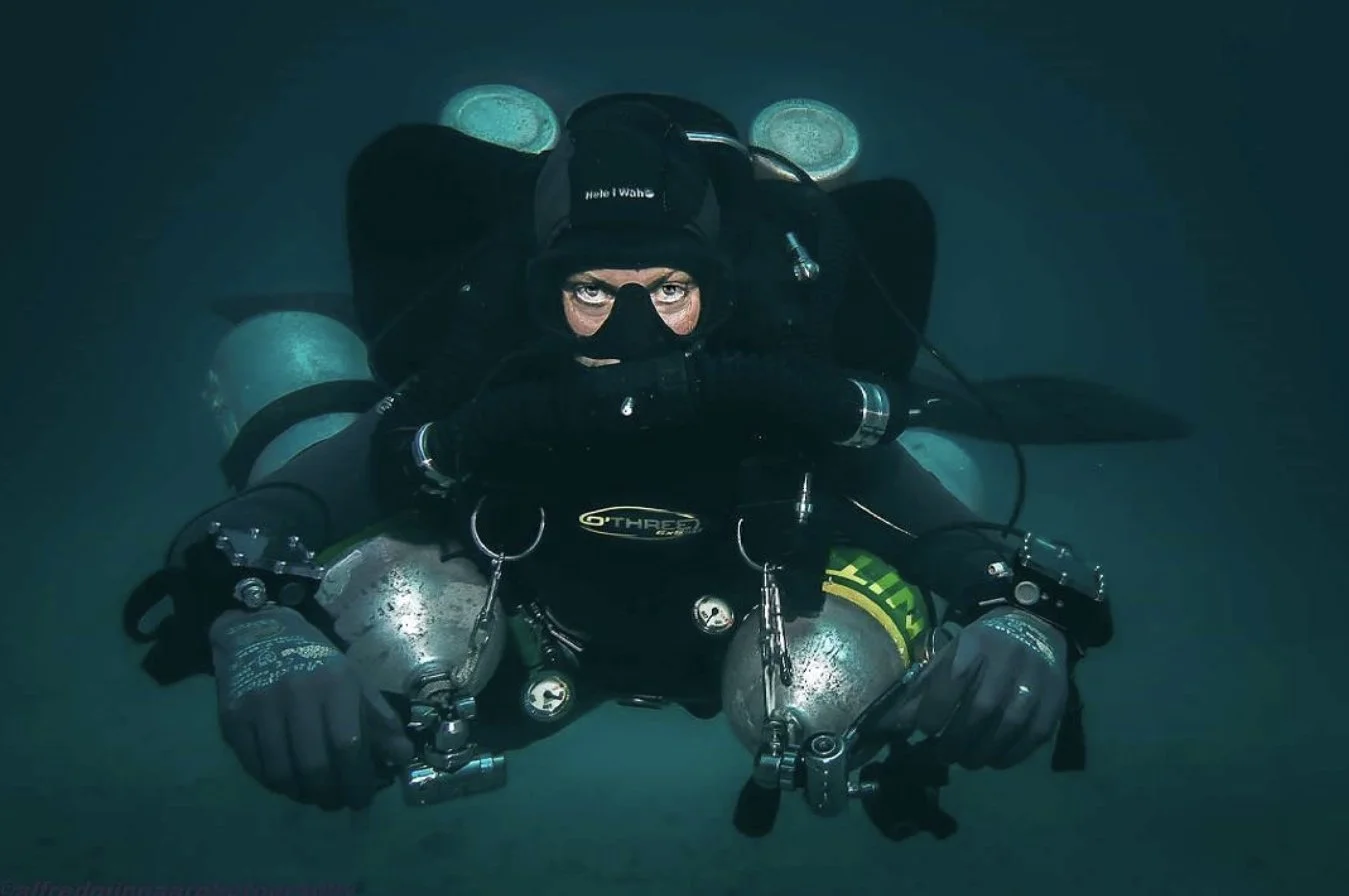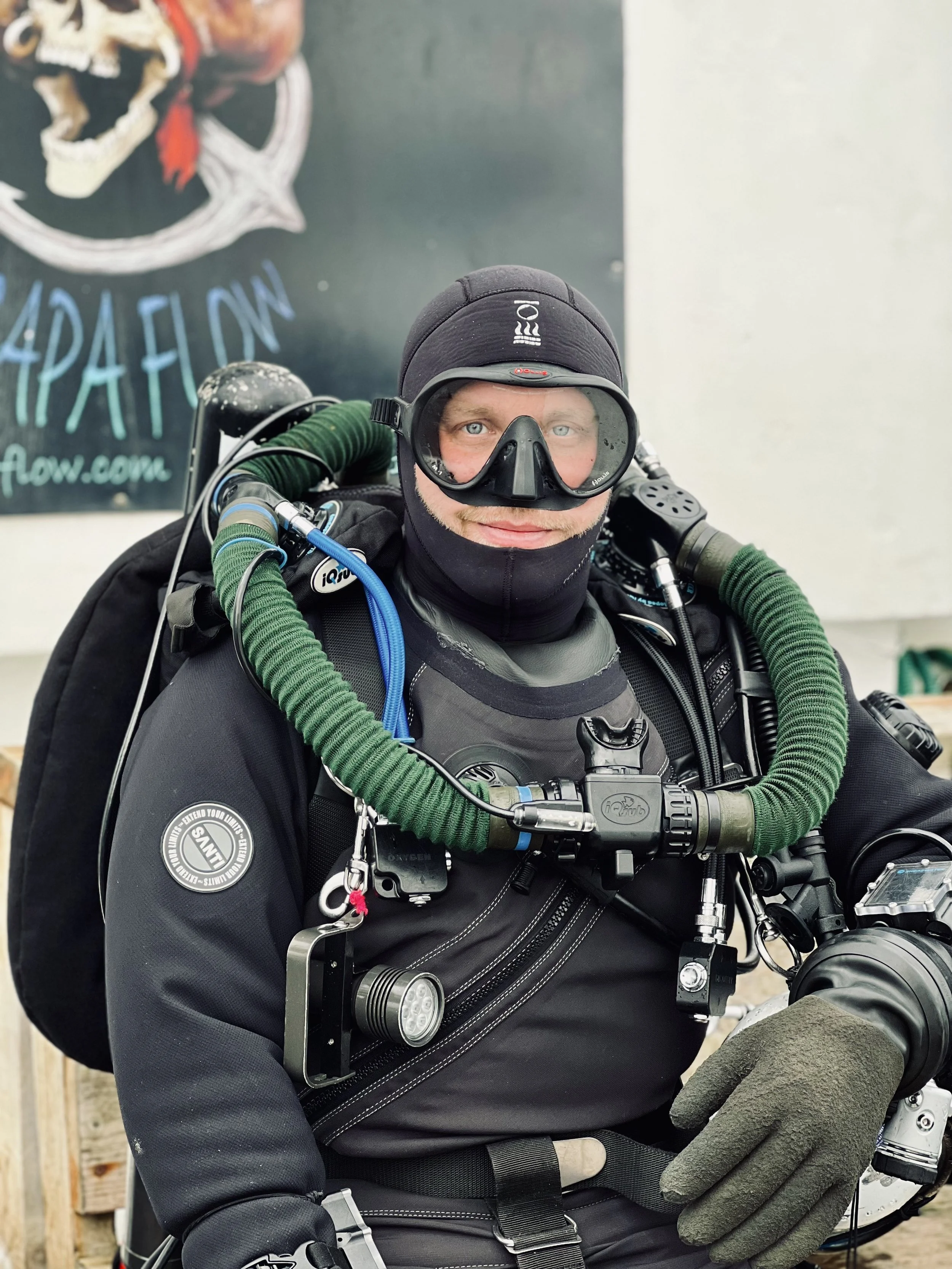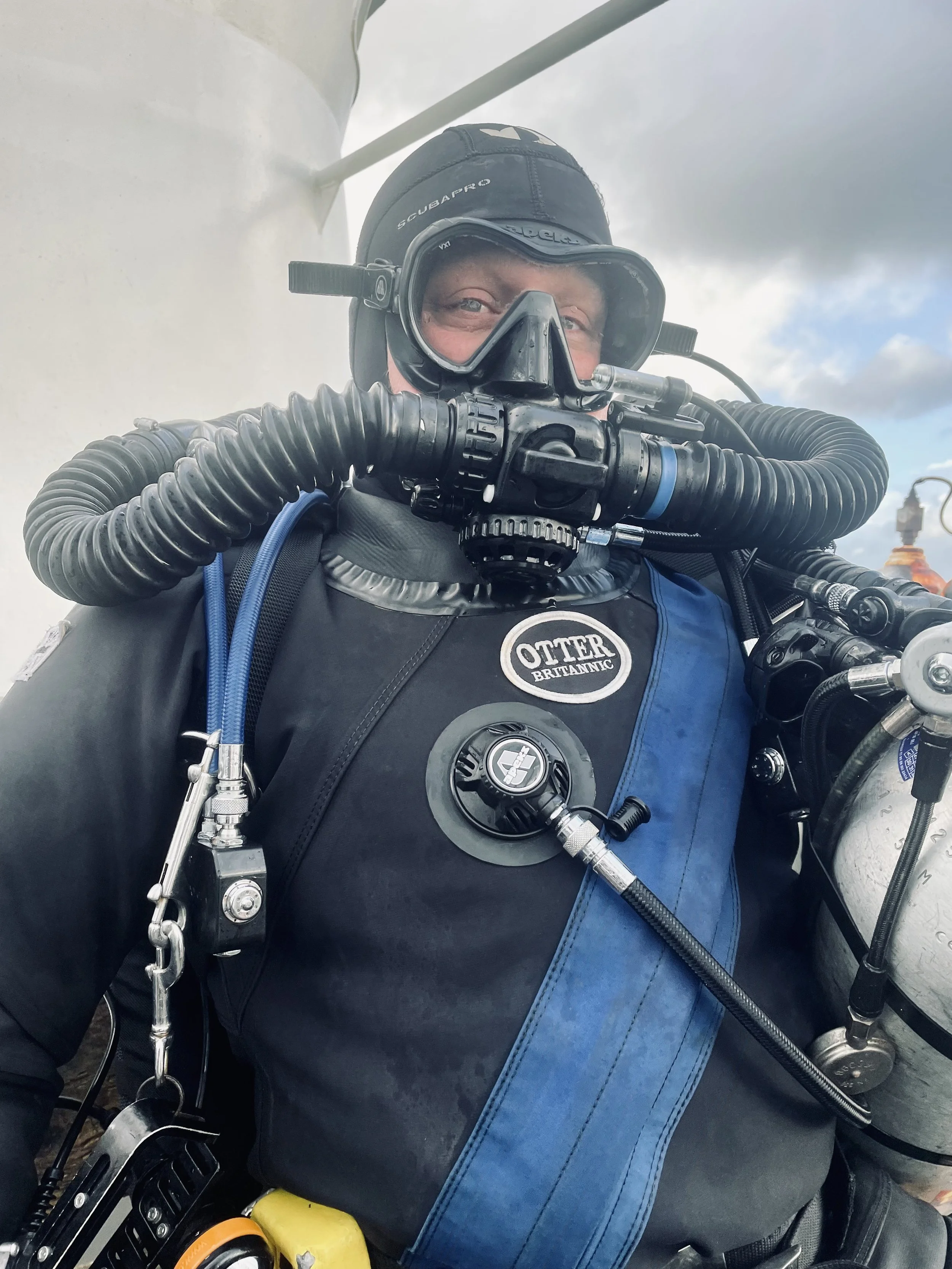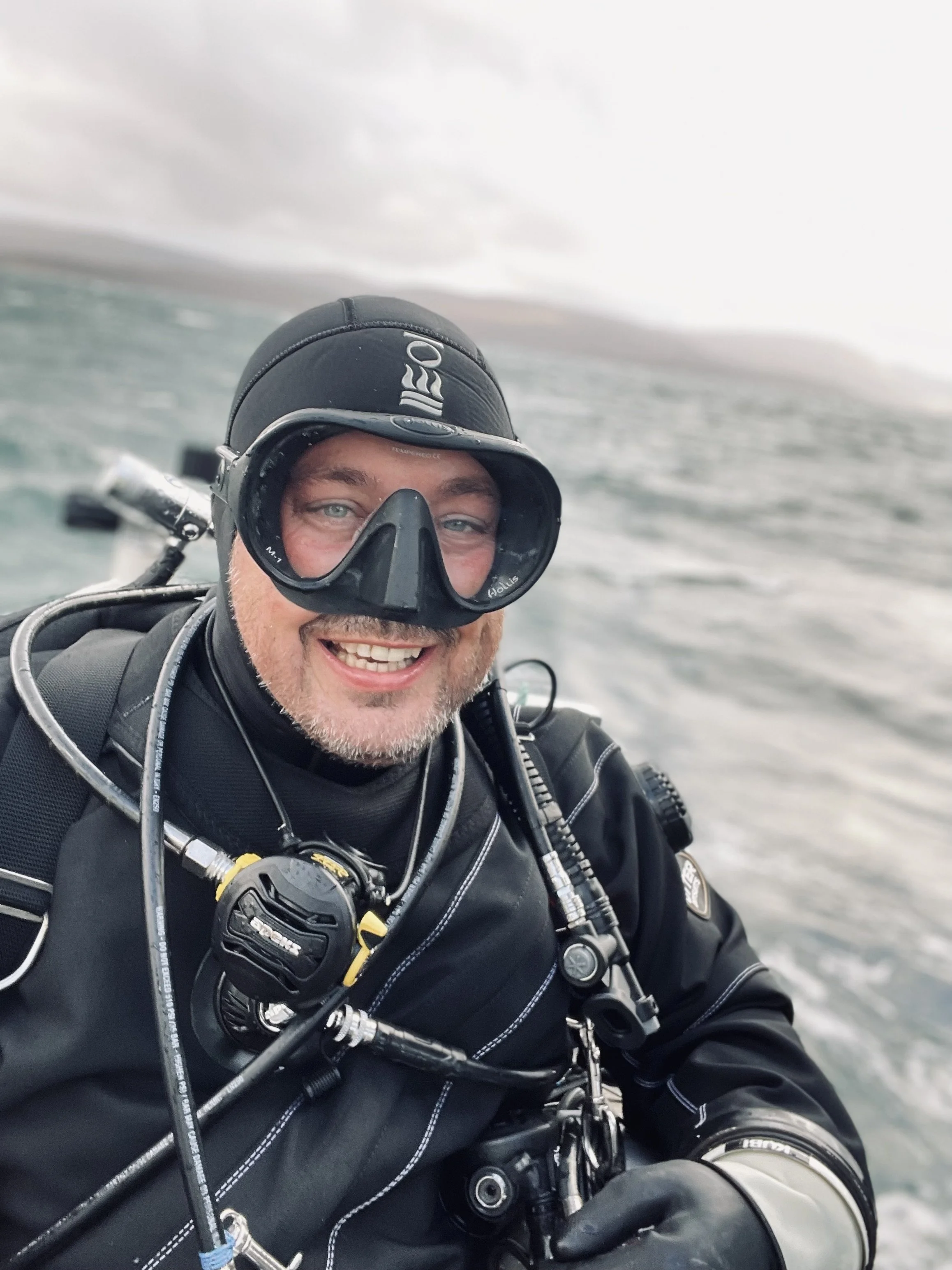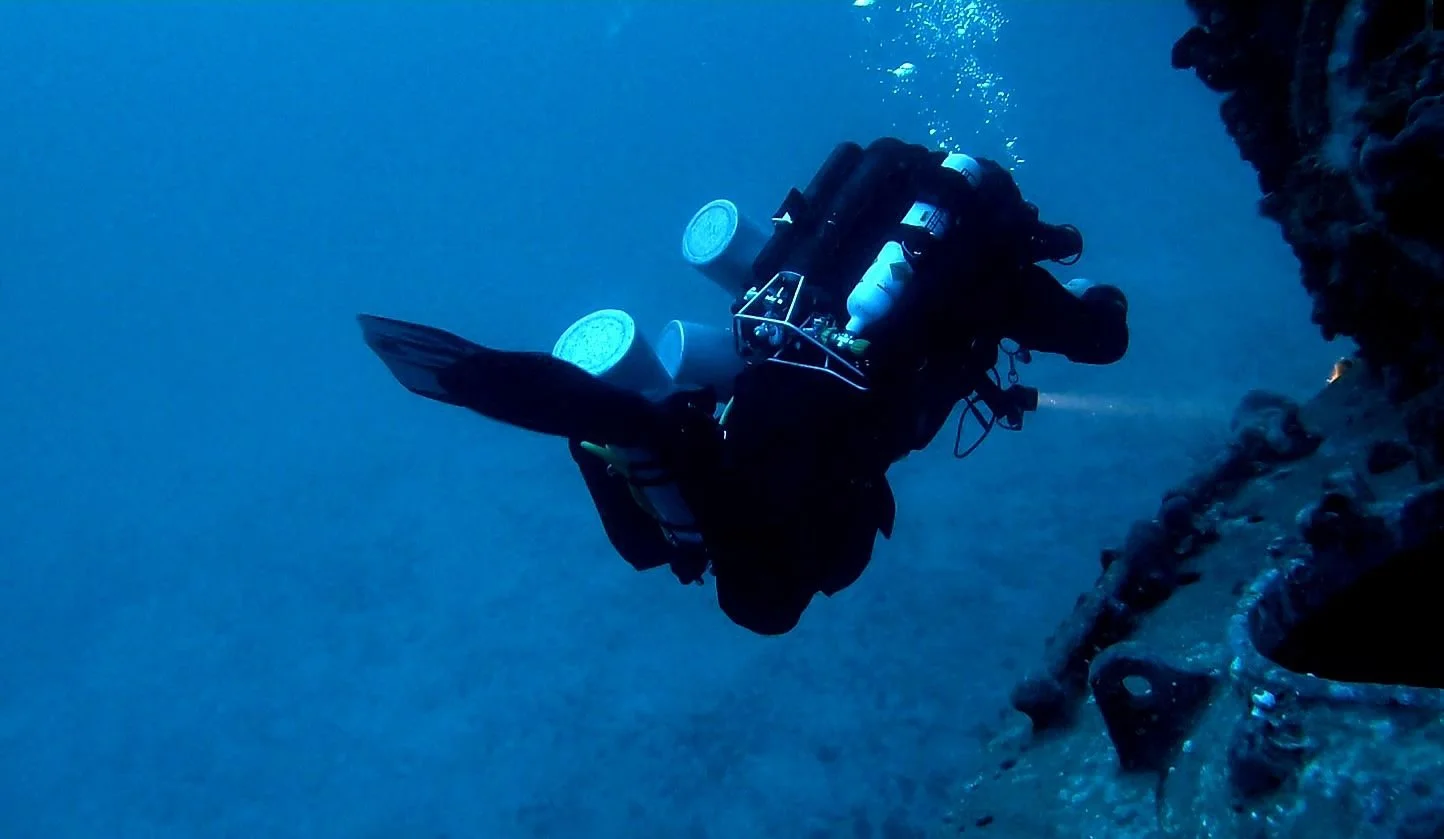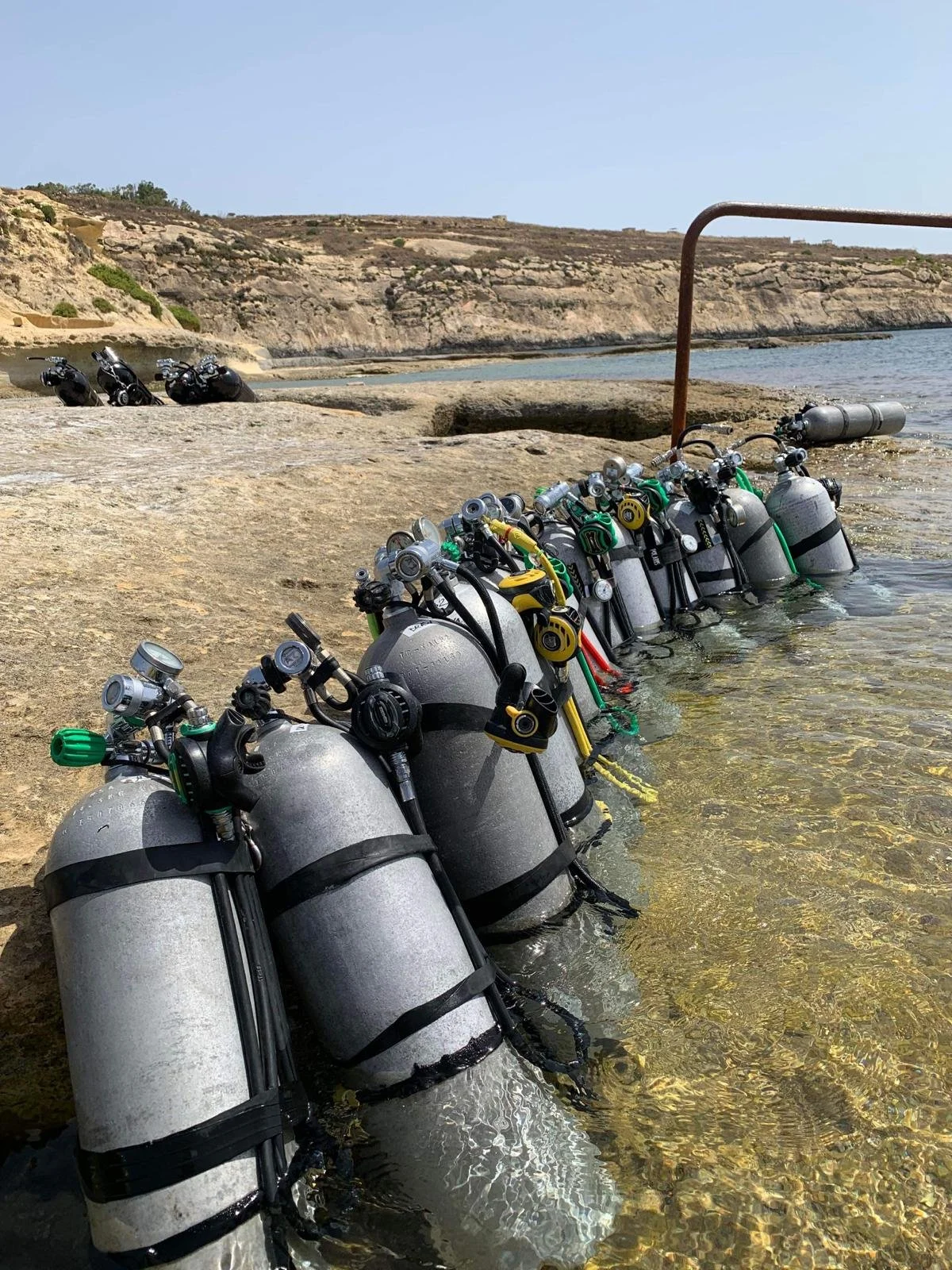A Simple Guide To Technical Diving
Technical diving or ‘tec’ as its often referred to, permits divers to extend their diving beyond recreational limits, allowing them to plan longer dives at shallower depths, or deeper dives to more advanced locations.
If your looking to expand both your diving skills and knowledge, tec can most certainly provide you with experiences and exploration opportunities in places very few will ever see.
In this blog we are going to explore technical diving in a little more detail, and aid to remove some of the crazy misconceptions that tec is only for those who have a desire to go deeper, darker and more dangerous…
What is Tec Diving?
In basic terms, tec is a form of diving that, by definition, exceeds the limits of recreational scuba.
Because technical diving often involves breathing gasses other than air, such as nitrox or trimix, tec requires enhanced training and experience to meet the arduous demands of operating in more challenging and complex locations or environments.
The Origins Of Tec Diving
The expression ‘technical diving’ can be traced back to the early 1990’s when the term ‘High-Tech’ Diving was used as a cover heading by physiologist Bill Hamilton (1930 to 2011), on the launch edition of the now defunct ‘aquaCorps Magazine’. The purpose of Bill’s article was to try and explain the current state of recreational diving beyond generally acceptable limits such as deep, mixed gas and decompression diving.
From here on, the term ‘technical diving’ became more recurrently used by aquaCorps both online and in print, but upon realising it was already being used by the Royal Navy, the United Kingdom’s naval warfare force to define rebreather diving, Hamilton (whom himself was a former U.S Fighter Pilot), made the decision to redefine technical diving as ‘breathing with more than one gas or a rebreather’.
Richard Pyle, a scuba diver and ichthyologist, later defined a technical diver as “anyone who routinely conducts dives with staged stops during an ascent as suggested by a given decompression algorithm’.
It is widely accepted that technical diving officially emerged sometime between the mid 1980’s and mid-to-late 1990’s, where its development was being closely monitored and documented by aquaCorps in “The Journal For Technical Diving” (Printed 1990 through to 1996).
Michael Menduno, whom was the founder and editor-in-chief of aquaCorps Magazine, went on to become a Senior Editor and writer for DAN Europe’s Alert Diver magazine, a contributing editor for X-Ray Magazine, and a staff writer for DeeperBlue.com. Michael is also currently on the board of the Historical Diving Society (USA) and a member of the Rebreather Training Council (RTC).
Why Is Technical Diving Important?
Prior to the 1990’s, both amateur and enthusiast divers had already been extensively looking at ways of extending the physiological limits of diving on air, as well as the ability to dive to deeper depths and run longer bottom times.
During the 1990’s, both military and commercial diving operations benefited from sizeable budgets, rigorously controlled procedures and extensive operational infrastructures, whereas the recreational community could only engage in more of a ‘trial and error’ approach to the use of rebreathers and mixed gas diving. As a consequence, technical diving endured a concerning level of diver fatalities until a reliable set of procedures and standards were eventually formulated.
Open vs Closed Circuit Technical Diving
Scuba diving equipment generally falls into one of three categories, either open circuit (OC), closed circuit (CC) or semi-closed (SC) depending on the type of breathing apparatus a diver uses. As tec divers progress and become increasingly more proficient, many elect to make the progressive jump from OC to CC, never to look back.
As the operation of a rebreather is unquestionably different when compared to conventional scuba, diver training almost always has to start from scratch as students learn to master new and complex units as well as additional emergency procedures, advancing from MOD 1 through to MOD 3.
Rebreather divers are required to spend many, many hours underwater on their units, usually around specific training depths before being permitted to progress to the next stage of certification. Where this in short may initially be seen as a backwards step overall and somewhat of a negative for a previously experienced open circuit diver, it is one of the few that closed circuit has to offer.
Where this blog is little more than a brief intro into the world of technical diving, it is in no form intended as a guide to rebreathers, and although many within the SEPE Diving team regularly dive on closed circuit systems, we always recommend seeking out the professionals if you are keen to learn or give one a go.
Lets take a look at the differences between open and closed circuit diving, revealing the unique characteristics and benefits of each method:
Open Circuit Systems
Open-circuit involves the use of a traditional breathing scuba apparatus, known as a regulator, in which none of the gas is recycled.
Most divers use a gas mixture consisting of 21% oxygen, 78% nitrogen and 1% other gases (e.g. argon). Others use a mixture of gasses consisting of more than 21% oxygen such as enriched air nitrox or trimix.
Regulators used in open-circuit diving aren’t designed to recycle or reuse any gas, with all usable breathing gas stored in a pressurised cylinder. When a diver inhales through their regulator, the gas is delivered to them via a demand valve directly from their cylinder.
When an OC diver exhales, their waste gas is typically released into the surrounding water, and this is what characterises the defining aspect of open circuit scuba.
Closed Circuit Systems
Closed-circuit scuba generally refers to the use of a rebreather which recycles some or all of the divers breathing gas.
Rebreathers contain a mouthpiece through which a diver expectedly inhales and exhales from. When a diver inhales, gas will travel from their cylinders and around their ‘loop’ to their mouthpiece, similar to how it does with open-circuit regulators. When a closed circuit diver exhales however, the gas doesn’t pass into the surrounding water. Instead, it’s retained in the loop, scrubbed of waste materials such as carbon dioxide and additional oxygen / diluent added so that the diver can continue to breath normally.
When we breath normal air at approximately 21% oxygen and 79% nitrogen, our body only actually uses 5% of the available 21%, meaning 16% goes unused. Rebreathers capitalise on this by only adding additional gas, as and when its required, and by reusing the residual oxygen left in the system. This means a divers gas lasts much longer and that smaller cylinders are able to be utilised.
A rebreather putting it simply, is an entire system constructed to provide and recycle a divers breathing gas. Rebreathers are further designed to always deliver the best gas mix for the given depth at the optimum PPO2 (Partial Pressure of O2), ensuring that the user is subject to the minimum amount of decompression possible.
A typical closed-circuit rebreather consists of the following components:
Mouthpiece: A component through which a diver inhales and exhales.
Hoses: Rebreathers have several hoses that are used to provide the diver with gas and recycle their used gasses. Hoses are typically made of durable but flexible synthetic rubber. Rebreather hoses connect the mouthpiece to other components like the cylinder and the counter-lungs.
Counter-lungs: These assist divers with inhaling and exhaling gas by maintaining the same pressure as the diver’s lungs (known as the tidal volume).
Scrubber: The scrubber is a component of a rebreather that’s designed to remove carbon dioxide from the gas exhaled by the diver.
Over-Pressure Valve: While not used in all rebreathers, some closed circuit breathing systems feature an over-pressure valve or OPV.
Mounted on the counterlungs, the over-pressure valve allows the diver to release gas in the breathing circuit when he or she is ascending. If gas remains trapped in the circuit, ascending will cause the gas to expand and, therefore, increase the risk of critical equipment failure or an uncontrolled rapid ascent.
Cylinders: All rebreathers must have cylinders in which a combination of breathing gasses are stored. This is usually in the form of a 3 litre ‘Dil’ or ‘Diluent’ cylinder and a 3 litre oxygen cylinder.
In contrast, the defining characteristic of closed-circuit diving is that some or all of the divers breathing gas is reused.
The Hazards & Risks of Technical Diving
To understand the risks of technical diving, one first needs to understand what is meant by the terms ‘hazard’ and ‘risk’. By definition, a ‘hazard’ is a circumstance, or set of that may cause a person harm, where as a ‘risk’ is the likelihood of any harm actually occurring.
It is widely accepted as divers look to dive deeper and for longer while using one or multiple gasses to accelerate their decompression obligation, that they are naturally exposing themselves to a series of inherent hazards and risks, especially given that there is almost always no immediately safe or direct ascent back to the surface.
Expectedly, because of the varied and limitless risks associated with technical diving, the extensive degree of physical training and knowledge development necessary to become fully certified reaches far beyond the realms of our recreational counterparts.
Hazards on the other hand are generally subject to the extended scope of tec diving and are often associated with the complex equipment technical divers use. In some cases, this factor can also present a secondary risk while mitigating a primary one. This can include the complexity of any gas management required to reduce the risk of a critical gas failure, or the use of gases potentially unbreathable for some or most parts of a dive to mitigate the risk of harm caused by oxygen toxicity, nitrogen narcosis or decompression sickness. Consequently the reduction of secondary risks may adversely affect any divers equipment choices, but this issue falls simply to skill and experience above anything else.
The fundamental basics of training technical divers includes rigorously learning and practicing procedures that are known from experience to be effective in handling the most common contingencies, and divers proficient in these emergency drills are less likely to panic or be overwhelmed by the circumstances when things don’t go according to plan. This is why many tec divers live by the motto ‘anything that can go wrong, will go wrong’ and of course, they plan their dives and equipment choices accordingly.
Why Tec Isn’t About Just Going Deeper
A technical dive could be defined as any dive conducted deeper than the recreational limit of 40 meters, or a dive in an overhead environment with no direct ascent to the surface such as a cave or the interior of a wreck.
In pretty much all cases, tec dives will include pre-planned decompression stops which are undertaken towards the end of the dive over a series of shallowing ‘stages’ during a controlled ascent to the surface. The depth-based definition is determined by the risk presented by the progressive impairment of mental competence in conjunction with the increasing partial pressure of any respired nitrogen.
Anyone who has completed a PADI Enriched Air course or similar will know that breathing air under pressure at an approximate depth of 30 meters presents a significant risk of nitrogen narcosis, but as we know, this isn’t an exact science and varies physiologically from diver to diver. Increasing the depth of a dive also increases the partial pressure of oxygen (PPO2) and so comes with it the additional risk of oxygen toxicity.
Technical diving regularly involves using a variety of gas mixtures such as trimix (oxygen, nitrogen, helium), which uses helium to replace some of the nitrogen, or heliox (helium & oxygen), in which there is no nitrogen, to reduce some of the aforementioned risks. Unfortunately, the additional complexity of handling some of these gasses introduces their own additional complications which can only be managed and controlled by specialised equipment configurations and enhanced procedural training.
Technical Diving & Decompression
As we have briefly touched on earlier, technical divers are required to undertake decompression stops at the end of their dives to reduce the risk of decompression sickness (DCS), which is also known to some as ‘the bends’, ‘getting bent’ or a ‘bend’.
Metabolically inert gases such as nitrogen and helium, are absorbed into a divers bodily tissues when breathed under high pressure, fundamentally during the deeper phases of a dive. These dissolved gases must be slowly released from the tissue compartments by controlling a divers rate of ascent to either restrict the formation and growth of, or try eliminate any gas ‘bubbles’ all together as they shallow. These decompression or ‘deco’ stops are often slightly varied and subject to numerous factors such as dive planning, gradient factors, dive computer algorithms and bubble models but more often than not, follow similar lines of consistency.
Tec divers breathe oxygen enriched breathing gas mixtures such as nitrox or even pure oxygen during deco stops as this significantly increases the rate of elimination for these inert gasses, with EANx 50 through to 80 being the most common choices. The elimination of these gases further continues during surface intervals (the time spent on the surface between dives), and this is reflected when planning any subsequent dives thereafter. A deco obligation can also be referred to as a ‘soft’ or ‘physiological’ ceiling.
As tec divers generally dive in ‘teams’, all gases carried by each diver are identical so that in the event of an emergency such as a catastrophic gas loss, there is always a contingent allocation calculated in line with the pre-dive planning. Because of this, in technical diving we strictly assert that divers should “plan the dive, and dive the plan!”
Becoming a Technical Diver
There are many ways of acquiring the necessary knowledge and skills to become part of the tec elite, and all agencies are respectfully similar in their training standards within their own rights.
As SEPE Diving are fundamentally all PADI Instructors, we are going to concentrate exclusively on PADI’s Tec 40, through to PADI Tec Trimix 65 courses. Please note however, the PADI Tec system is currently under review and subject to change, but this blog was correct at the time of writing.
To embark on their tec journey, PADI rigorously specify that enrolling divers must at least:
Be a PADI Advanced Open Water Diver
Be a PADI Enriched Air Diver with atleast 10 dives deeper than 18m
Be a PADI Deep Diver with at least 10 dives to 30m
Be at least 18 years old with 30 logged dives
The PADI Tec Deep program is conducted and completed in 3 core stages:
PADI Tec 40
PADI Tec40 is designed for transitioning from recreational scuba to technical diving. Here you will qualify to make limited decompression dives to 40m.
To enrol you must: Be PADI Advanced Open Water diver, have 30 logged dives, be a PADI Enriched Air diver with at least 10 dives deeper than 18m, be a PADI Deep Diver with at least 10 dives to 30m
PADI Tec 45
Here you will learn to extend your depth limit to 45m, and how to make accelerated decompression dives using enriched air nitrox or pure oxygen. Tec45 is where the hard work really begins!
To enrol you must: Be PADI Rescue Diver, be a PADI Tec 40 diver, have a minimum of 50 logged dives with at least 12 dives on enriched air nitrox deeper than 18m, and 6 dives deeper than 30m
PADI Tec 50
Tec 50 is the third and final part of the PADI Tec Deep Diver Program. Here you will extend your range to 50m and how to make extended and accelerated decompression stops using up to 2 gasses.
To enrol you must: Be a PADI Tec 45 diver, have a minimum of 100 logged dives with at least 20 dives on enriched air nitrox deeper than 18m, and 15 dives deeper than 30m
Tec Trimix 65
Additionally, those who earn the coverted PADI Tec 50 certification are able to enrol on the PADI Tec Trimix 65 course. Here you will extend your range to 65m using trimix and learn how to handle and manage 3 diving gasses.
To enrol you must: Be a PADI Tec 50 diver and have a minimum of 100 logged dives


